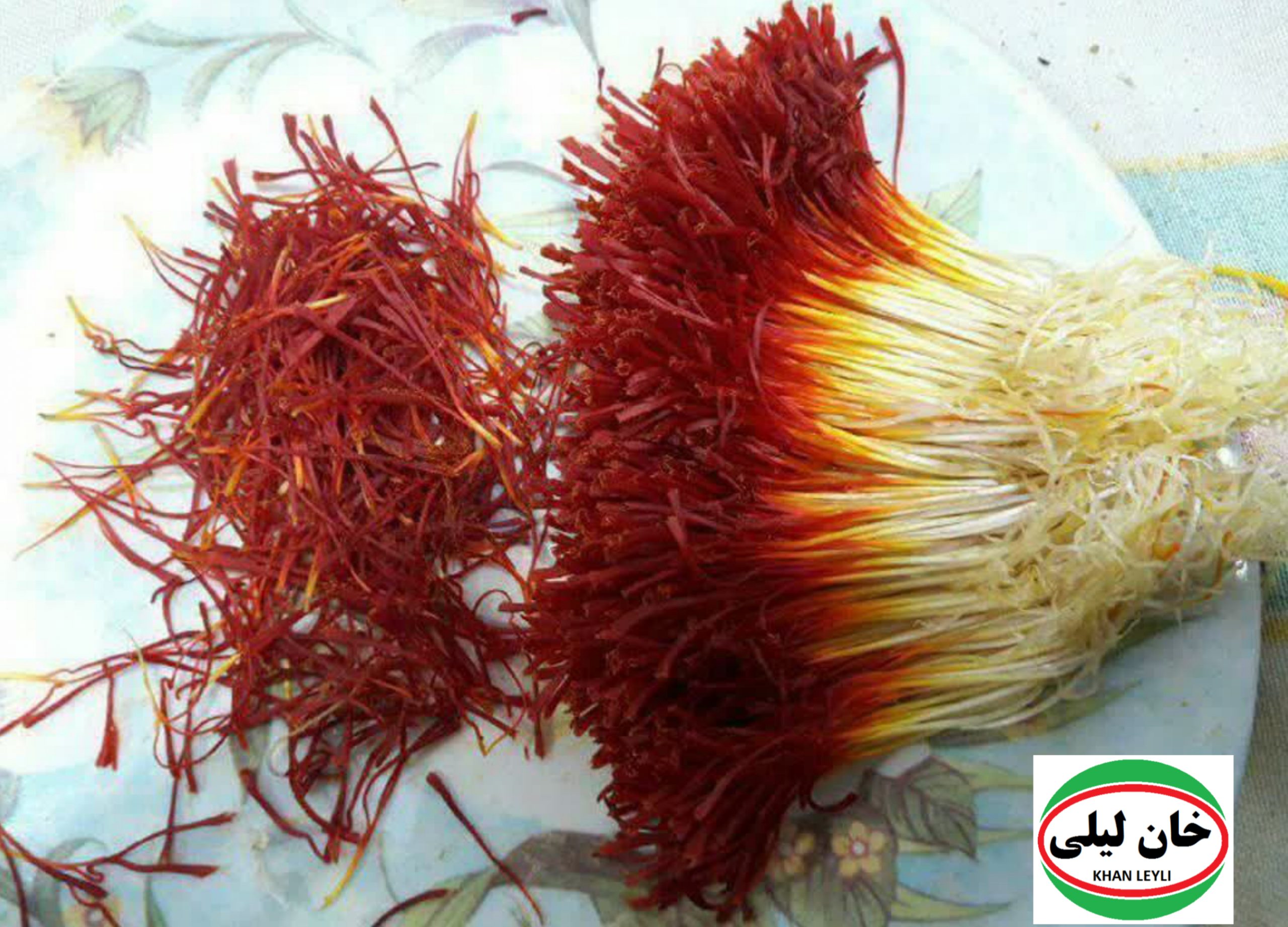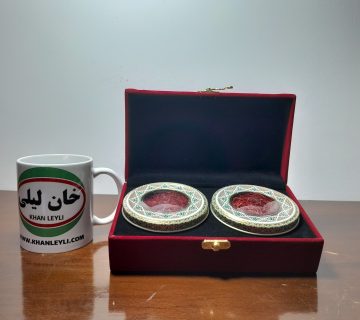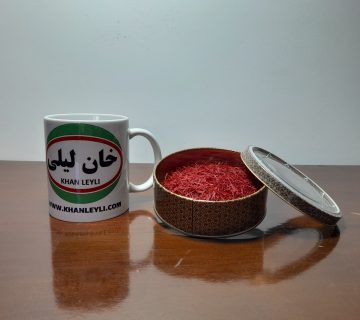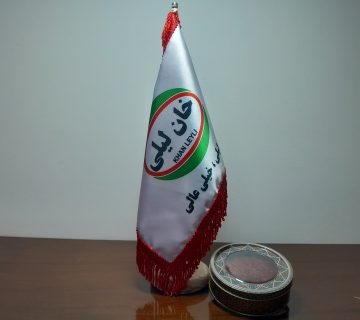Saffron is a spice derived from the flower of Crocus sativus, commonly known as the saffron crocus. There are different types and grades of saffron, which can vary based on factors such as the region where it is cultivated, the specific variety of saffron crocus, and the harvesting and processing methods. Some of the well-known types of saffron include:
- Spanish Saffron (Crocus sativus ‘La Mancha’): La Mancha saffron is considered one of the highest quality saffron in the world. It is primarily produced in the La Mancha region of Spain and is known for its vibrant red color and strong aroma.
- Iranian Saffron (Crocus sativus ‘Super Negin,’ ‘Sargol,’ ‘Pushal’): Iran is one of the largest producers of saffron globally. Iranian saffron comes in various grades, including Super Negin (the highest quality), Sargol (all red stigmas with no yellow styles), and Pushal (contains some yellow styles). Iranian saffron is renowned for its flavor, aroma, and color.
- Kashmiri Saffron (Crocus sativus ‘Mogra’ or ‘Lacha’): Grown in the Kashmir region of India, Kashmiri saffron is known for its deep red color and strong flavor. It is often considered one of the best varieties of saffron.
- Afghan Saffron: Afghanistan has also become a notable producer of saffron, and Afghan saffron is recognized for its high quality and unique flavor profile.
- Greek Saffron (Crocus sativus ‘Krokos Kozanis’):This saffron is cultivated in the Kozani region of Greece. It is protected by a designation of origin, and the distinctive feature is its intense color and strong aroma.
- Moroccan Saffron: Morocco produces saffron with a distinct flavor and aroma. It is often used in Moroccan cuisine and is appreciated for its quality.
- Italian Saffron (Crocus sativus ‘L’Aquila’):** L’Aquila saffron is produced in the Abruzzo region of Italy. It has a reputation for its intense color and is often used in Italian dishes.
When purchasing saffron, it’s essential to consider factors such as color, aroma, and the presence of yellow styles (which may affect the quality). Saffron is generally an expensive spice, and its quality can vary, so it’s advisable to buy from reputable sources to ensure authenticity and purity.
From La Mancha to Kashmir: Exploring the Diverse Types of Saffron and Their Culinary Impact”
Saffron, the golden-hued spice derived from the delicate Crocus sativus flower, is a culinary treasure that spans continents and cultures. From the sun-drenched fields of La Mancha to the picturesque landscapes of Kashmir, saffron varieties exhibit a rich tapestry of flavors, aromas, and culinary significance. This essay embarks on a journey through the diverse types of saffron, shedding light on the unique characteristics of each and their profound impact on the world of cuisine.
La Mancha, Spain – Nestled in the heart of Spain, the La Mancha region is synonymous with saffron of unparalleled quality. The saffron crocus thrives in the arid plains, producing strands that boast a vibrant red hue and an unmistakable aroma. La Mancha saffron, often referred to as “red gold,” holds a coveted place in culinary circles. Its intense color and bold flavor elevate the dishes of Spanish cuisine, from the iconic paella to traditional desserts. Chefs worldwide seek out La Mancha saffron for its ability to impart both color and complexity to a wide array of dishes.
Iran – Across the globe, in the sun-soaked fields of Iran, a different saffron story unfolds. Iranian saffron, renowned for its Super Negin, Sargol, and Pushal varieties, stands as a testament to the country’s saffron mastery. Super Negin, characterized by long, crimson threads, is the pinnacle of Iranian saffron excellence. Sargol, with its all-red stigmas, is prized for its purity, while Pushal, a combination of red stigmas and yellow styles, offers a nuanced flavor profile. Iranian saffron not only graces Persian dishes like saffron rice and stews but also finds its way into global cuisines, adding a touch of luxury and sophistication.
Kashmir, India – The misty valleys of Kashmir contribute to the production of saffron with a distinctive character. Known for its deep red color and robust flavor, Kashmiri saffron is a jewel in the crown of Indian spices. Mogra and Lacha are popular varieties cultivated in the region. Kashmiri saffron, often used in traditional Indian sweets and savory dishes, imparts a unique earthiness and complexity. Its culinary impact extends beyond borders, as chefs around the world incorporate it into an array of dishes, creating a fusion of flavors that transcends cultural boundaries.
As we traverse the culinary landscape from La Mancha to Kashmir, it becomes evident that each saffron variety brings its own magic to the table. The choice of saffron can transform a dish, elevating it from ordinary to extraordinary. Whether it’s the paella of Spain, the kebabs of Iran, or the biryanis of India, saffron’s influence is profound and versatile.
In conclusion, the exploration of diverse saffron types enriches our understanding of this precious spice and its culinary impact. From the fields of La Mancha to the valleys of Kashmir, saffron weaves a narrative of flavor, color, and cultural significance. As we savor the distinct essences each type brings, we celebrate the universal appeal of saffron, a spice that transcends borders and enhances the global palate.
Saffron Splendor: Exploring the Richness of Iranian Golden Threads
Saffron, with its delicate golden threads, has long been celebrated as a spice of unparalleled richness and distinction. Among the diverse sources of this coveted spice, Iran stands out as a beacon of saffron splendor, producing some of the finest varieties that grace tables around the world. In this exploration, we delve into the profound cultural significance, meticulous cultivation, and global allure of Iranian saffron.
Iran’s saffron journey traces back thousands of years, establishing it as a primary hub for saffron cultivation. The ideal combination of climate, soil, and expertise contributes to the production of saffron strands that are unrivaled in their color, flavor, and aroma. The arid regions of Iran, particularly in provinces like Khorasan, contribute significantly to the country’s saffron output. The meticulous cultivation methods, passed down through generations, result in the development of exquisite saffron varieties that are a testament to the mastery of Iranian saffron producers.
Iranian saffron is characterized by several distinct varieties, each with its own unique qualities. Super Negin, distinguished by its long, deep-red threads, represents the epitome of saffron luxury. Sargol, with its all-red stigmas and no yellow styles, exudes purity and intensity. Pushal, a blend of red stigmas and yellow styles, offers a more nuanced flavor profile. These varieties not only serve as the foundation of Iranian cuisine but also contribute significantly to the global saffron market, commanding attention for their exceptional quality.
Beyond its economic importance, saffron holds profound cultural significance in Iran. The spice is intricately woven into the fabric of Persian traditions, from culinary delights like rice dishes and stews to the vibrant tapestry of Persian art and poetry. Saffron’s presence in Iranian rituals and ceremonies underscores its symbolic value, signifying prosperity, hospitality, and an enduring connection to the land.
Iranian saffron has transcended national borders, finding its way into kitchens worldwide. Its deep color, robust flavor, and complex aroma have made it a sought-after ingredient for chefs and home cooks alike. From enhancing the flavors of Middle Eastern and Mediterranean dishes to gracing international cuisines with its golden touch, Iranian saffron continues to be a global ambassador of culinary excellence.
In conclusion, “Saffron Splendor: Exploring the Richness of Iranian Golden Threads” takes us on a journey through the captivating world of Iranian saffron. From the fields of cultivation to the cultural tapestry it weaves, Iranian saffron stands as a testament to the artistry and heritage of this precious spice. As we savor the golden threads in our dishes, we partake in a centuries-old tradition that enriches both our palates and our understanding of the intricate beauty that is Iranian saffron.
Saffron Tapestry: Unveiling the Cultural Heritage of Kashmir’s Golden Harvest”
In the misty valleys of Kashmir, where the Himalayas stand sentinel, a golden tapestry unfolds. Here, the delicate Crocus sativus flower gives rise to one of the world’s most coveted spices – Kashmiri saffron. In this exploration, we peel back the layers of this cultural masterpiece, revealing the profound heritage, meticulous cultivation, and the golden threads that connect Kashmir to its saffron legacy.
Kashmir, with its breathtaking landscapes and temperate climate, provides an ideal backdrop for the cultivation of saffron. The cultivation of saffron in the region dates back centuries, and today, it has become an integral part of Kashmir’s cultural identity. The fields, adorned with the purple blooms of the saffron crocus during the autumn harvest, paint a mesmerizing picture against the backdrop of snow-capped mountains. The saffron fields become a living canvas, reflecting the harmony between nature and culture in the Kashmiri way of life.
Kashmiri saffron is predominantly represented by two distinct varieties – Mogra and Lacha. Mogra, characterized by its deep red stigmas and strong flavor, is often sought after for its robust and earthy qualities. Lacha, with its long, crimson threads and intricate aroma, adds a touch of elegance to the saffron spectrum. Both varieties, carefully cultivated in the rich soil of Kashmir, contribute to the saffron tapestry that has been woven into the region’s heritage.
Saffron in Kashmir is not merely a spice; it is a symbol of heritage, tradition, and cultural richness. The spice finds its way into various aspects of Kashmiri life, from culinary delights like the aromatic saffron rice and traditional desserts to the vibrant fabric of Kashmiri art and crafts. Saffron-laden teas are shared in moments of warmth, and the golden threads are used in traditional ceremonies and rituals, marking saffron’s deep integration into the cultural tapestry of Kashmir.
The cultivation of saffron in Kashmir is not without its challenges. Changing weather patterns, geopolitical tensions, and economic fluctuations have posed hurdles for saffron farmers. Despite these challenges, the resilience of Kashmiri saffron cultivators is evident as they continue to preserve and pass down the age-old traditions associated with saffron cultivation. The spice remains a source of pride for the people of Kashmir, reflecting their ability to adapt and persevere.
Kashmiri saffron’s unique flavor and aroma have garnered international acclaim, making it a sought-after spice in global markets. Chefs around the world prize the golden threads for their distinct qualities, infusing a touch of Kashmiri elegance into their culinary creations. The global appreciation for Kashmiri saffron not only contributes to the region’s economy but also fosters a deeper understanding and respect for Kashmir’s cultural heritage.
In conclusion, “Saffron Tapestry: Unveiling the Cultural Heritage of Kashmir’s Golden Harvest” is a journey through the soul of Kashmir, where saffron is not just a spice but a living heritage. The golden threads of Kashmiri saffron, woven into the fabric of daily life, showcase the resilience, cultural richness, and timeless beauty that define this Himalayan region. As we savor the essence of Kashmiri saffron, we partake in a celebration of tradition and artistry that spans generations.








No comment